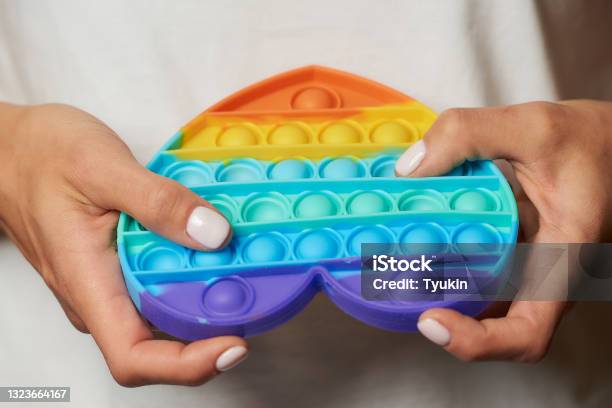In recent years, fidget toys have taken the world by storm, becoming a staple in classrooms, offices, and homes. While their popularity skyrocketed with the advent of the fidget spinner in 2017, these simple yet captivating gadgets have a rich history and a variety of forms that serve diverse purposes. Whether you’re a parent, a student, a professional, or someone who simply enjoys a tactile distraction, there’s a fidget toy out there for you. In this article, we’ll explore what fidget toys are, their benefits, the different types available, and why they have become such a cultural phenomenon.
What Are Fidget Toys?
Fidget toys are small objects designed to be fiddled with by the hands. They are used primarily to help people focus, relieve stress, or manage anxiety. These toys come in many shapes, sizes, and materials, ranging from simple stress balls to more complex gadgets like fidget spinners, cubes, and stretchy strings. The common thread among all fidget toys is their ability to engage the senses, particularly touch, in a repetitive and soothing way.
The Rise of Fidget Toys: A Brief History
While the modern fidget toy craze can be traced back to the explosion of the fidget spinner in 2017, the concept of using objects to soothe anxiety and improve concentration is far from new. Humans have long used various items to keep their hands busy—think of the rosary beads used for prayer, worry stones carried for stress relief, or even the ubiquitous pen-clicking habit.
The fidget spinner, however, brought fidget toys into the mainstream. Marketed as a tool to help children with attention deficit hyperactivity disorder (ADHD) focus better, it quickly became a global sensation, appealing to people of all ages and backgrounds. Although the fidget spinner’s popularity has waned, it paved the way for a new wave of fidget toys that offer a range of tactile and sensory experiences.
The Benefits of Fidget Toys
Fidget toys are more than just a passing trend; they have several benefits that make them valuable tools for many individuals. Here are some of the key advantages:
- Improved Focus and Concentration: Fidget toys can help people stay focused, especially in situations that require prolonged attention. For individuals with ADHD, autism, or anxiety disorders, fidget toys provide a physical outlet that can help them concentrate better on tasks at hand.
- Stress Relief: The repetitive motions associated with fidget toys can have a calming effect, similar to meditation or deep breathing exercises. Squeezing a stress ball, twirling a fidget spinner, or popping a bubble wrap-like toy can all help to release built-up tension.
- Sensory Stimulation: Many fidget toys provide sensory input that can be particularly beneficial for individuals with sensory processing issues. Textured toys, for example, can help desensitize overactive senses or provide the necessary stimulation for underactive senses.
- Improved Dexterity and Fine Motor Skills: Toys that require pinching, pulling, twisting, or rolling can help improve fine motor skills and hand-eye coordination, making them useful for children in developmental stages and adults recovering from hand injuries.
- Enhanced Creativity and Problem-Solving: Fidget toys can stimulate parts of the brain associated with creativity and problem-solving. When the hands are busy, the mind often wanders freely, leading to unexpected insights or solutions to problems.
Types of Fidget Toys
The world of fidget toys is vast and varied. Here are some of the most popular types:
- Fidget Spinners: Perhaps the most iconic fidget toy, spinners are designed to spin smoothly between the fingers. Their motion is soothing, and the challenge of balancing and keeping them spinning adds a layer of engagement.
- Fidget Cubes: These are small, handheld cubes with different tactile features on each side, such as buttons, switches, dials, and rollers. Fidget cubes offer a variety of sensory experiences in one compact device.
- Stress Balls: A classic choice, stress balls are soft, squeezable toys that provide a simple way to release stress and tension. They come in various textures and firmness levels to cater to different preferences.
- Tangle Toys: Made of interconnected pieces that twist and turn, tangle toys are perfect for those who enjoy continuous motion. They are particularly good for improving hand dexterity and relieving stress.
- Pop It Toys: These silicone-based toys mimic the sensation of popping bubble wrap. They are incredibly popular for their satisfying “pop” sound and are often used in classrooms and therapy settings to help children focus.
- Stretchy Strings: These are rubbery, stretchy toys that can be pulled, twisted, and squeezed. They provide a fun sensory experience and are particularly popular with children.
- Putty and Slime: These malleable substances can be squeezed, stretched, and molded, providing both tactile stimulation and stress relief. Many types of therapeutic putty are used in occupational therapy to improve grip strength and coordination.
Why Have Fidget Toys Become So Popular?
Several factors contribute to the widespread popularity of fidget toys:
- Accessibility and Affordability: Fidget toys are widely available and relatively inexpensive. They can be found in toy stores, online marketplaces, and even at convenience stores, making them accessible to a broad audience.
- Appeal to All Ages: While initially marketed towards children, especially those with ADHD or autism, fidget toys have found a fanbase among adults as well. Whether it’s a stress ball on an office desk or a fidget cube in a purse, these toys are versatile and appeal to a wide range of people.
- Aesthetic and Novelty Appeal: Fidget toys come in various colors, shapes, and designs, often appealing to aesthetic tastes and novelty seekers. The customization options also mean they can be tailored to suit personal preferences, from simple monochrome designs to vibrant, multicolored patterns.
- Psychological Benefits: In an increasingly stressful world, fidget toys offer a simple, tangible way to manage anxiety and stress. Their benefits are backed by anecdotal evidence from users who report improved focus, reduced anxiety, and better stress management.
- Social Media and Trends: The rise of platforms like TikTok and Instagram has played a significant role in popularizing fidget toys. Viral videos showcasing tricks, unboxings, and reviews have helped spread the craze and keep it alive.
The Future of Fidget Toys

As our understanding of mental health and sensory needs continues to grow, the demand for tools that can help manage stress and improve focus is likely to increase. Fidget toys are not just a passing fad; they are a reflection of a society that is becoming more attuned to mental health and the diverse needs of individuals.
Moreover, innovation in the fidget toy market is far from over. Manufacturers are constantly exploring new materials, designs, and functionalities to cater to an ever-growing audience. From smart fidget toys that integrate technology to eco-friendly options made from sustainable materials, the future looks bright for these seemingly simple gadgets.
Conclusion
Fidget toys have proven to be more than just a trend. They are versatile tools that offer numerous benefits, from reducing anxiety and stress to improving focus and fine motor skills. As they continue to evolve and diversify, fidget toys are likely to remain a staple in the lives of those who seek comfort, focus, and a little bit of fun in their everyday routines. Whether you’re new to the world of fidget toys or a seasoned pro, there’s always something new to discover and enjoy.





